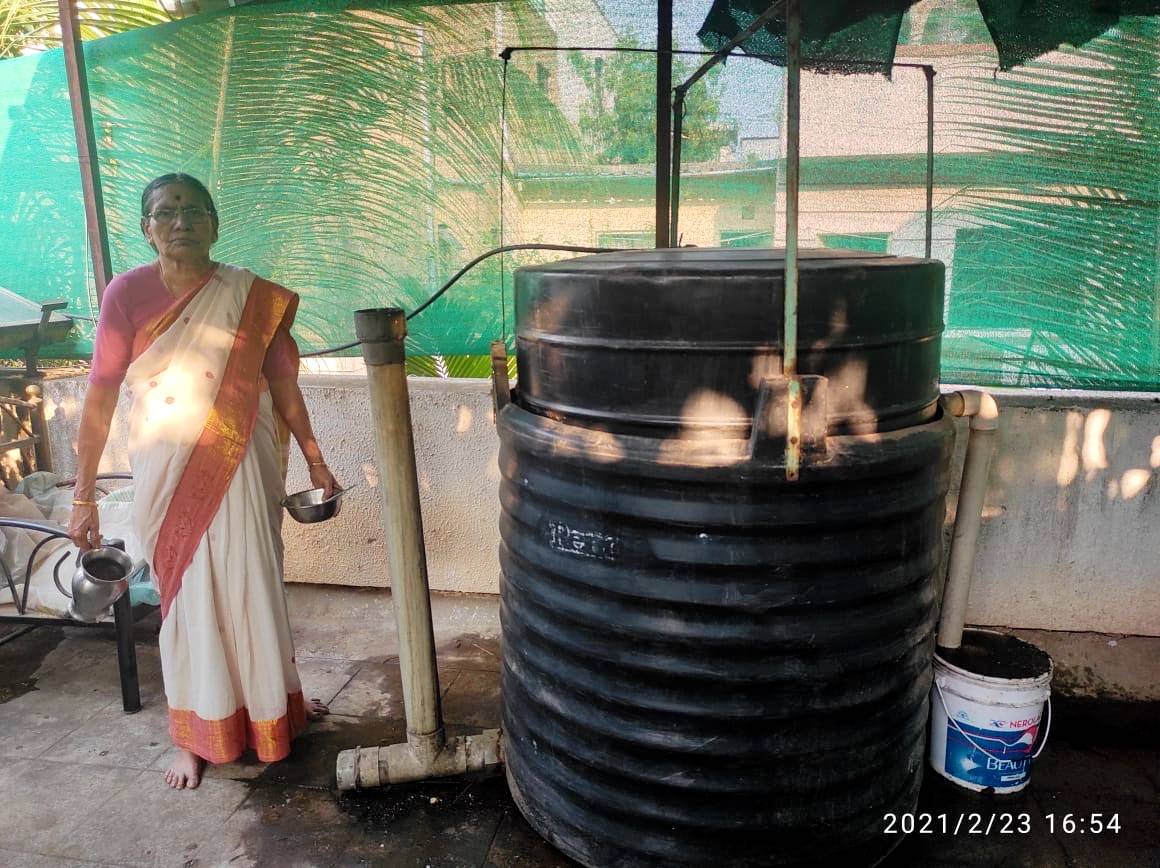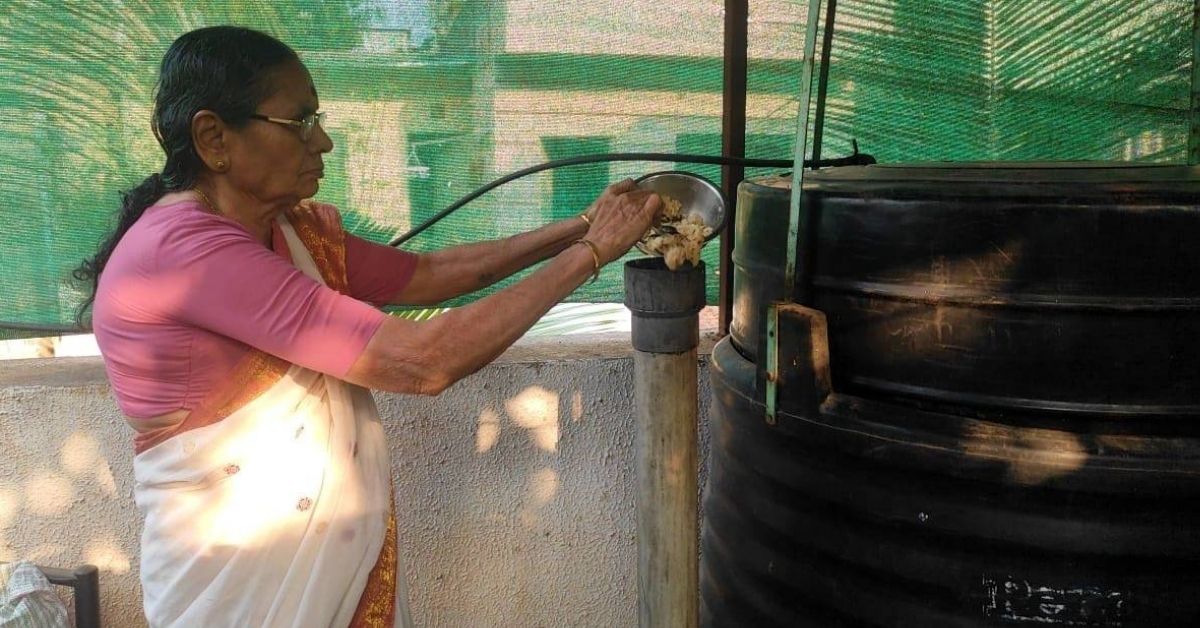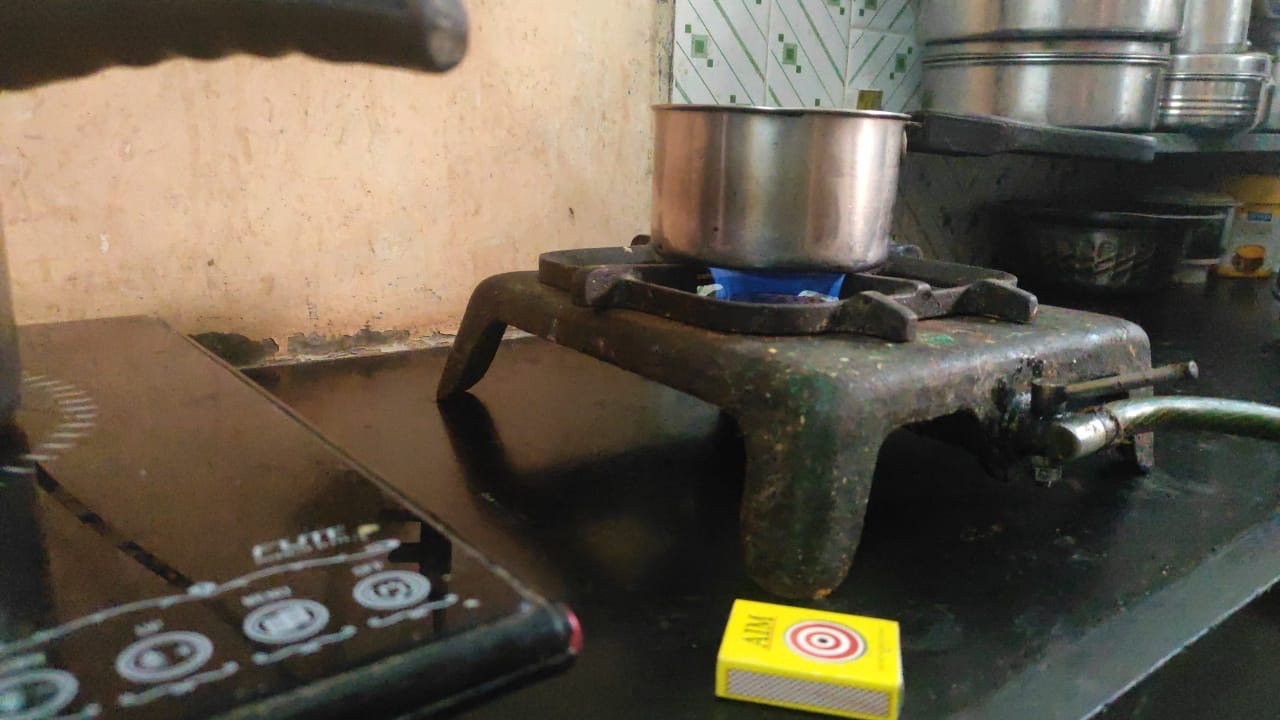In 2005, 77-year-old Vimal Dighe, a resident of Karve Nagar in Pune, came across a show on television about how waste from the kitchen can be converted into cooking gas. Being an environmentally-conscious person, she was intrigued.
“I have always tried to generate as little waste as possible. I usually use food waste and the water used to wash vegetables or fruits for the plants in our garden. When I buy groceries, I ensure I carry a cloth bag so I don’t need to buy one-time-use plastic bags. So when I came across the idea of generating cooking gas from wet waste in the kitchen, I discussed it with my son, who reached out to an organisation named ARTI — Appropriate Rural Technology Institute — in Pune to install a biogas unit on our terrace,” Dighe tells The Better India.
Even today, the family continues to use biogas for cooking, and has reduced their LPG expenses.

The mechanism
According to Dighe, the installation of the biogas unit took only two days, and was not too expensive. “The unit consists of two water tanks. The bottom tank is also known as the slurry tank, and has a capacity of 1,000 litres. The second one, which is placed upside down over the bottom tank, is a few litres less, so that it can fit evenly without generating an air gap,” Dighe says, adding that the biogas is collected in the smaller tank and transferred through a pipe into the kitchen.
A pipe is placed in front of the two tanks that directly connects to the slurry tank. Wet food waste including leftover vegetables, food items, and tea leaves is dropped through this.

“Once the food waste is thrown in, we need to feed in 4 litres of water. During the first round of operations, we added an accelerator that consists of cow dung and other organic materials to initiate the fermentation and digestion process. Within three weeks, the biogas tank was full,” says Dighe.
The gas is directed from the tank through an outlet connected to a pipe. This leads to the kitchen, where the gas is used to power a chulha.
Dighe says the biogas unit has not required any maintenance or repair since the day it was installed. She adds that operating it is so easy that even the children can throw their food waste without any adult supervision.

Cutting household expenditure by half
Shreya Dighe (21), was only 7 years old when she was first introduced to the biogas unit in her home.
She says, “Having grown up surrounded by environmentally-conscious people, and with a biogas unit at home, I was always an active participant in environment-related subjects and eco-clubs at school. Whenever we discussed biogas, I was at the top of my class. I could explain concepts that went beyond textbooks, and my teachers were often surprised and asked if I had a unit back home.”
Dighe and her family — her son Vivek, his wife Pratima and their two children — have been using biogas for their cooking needs for 16 years now.
“We use the biogas to make tea, coffee, rotis, sabzi, and for boiling other items. Since the heat produced is only 60% compared to an LPG stove, cooking heavy dishes like rice or gravy takes longer,” says Dighe, adding that 50% of their cooking needs depend on the biogas.
To cook food that takes a long time and consumes a lot of heat, such as rice or gravies, the family also uses an LPG stove connection. But the number of cylinders purchased every year is only five or six.
No comments:
Post a Comment